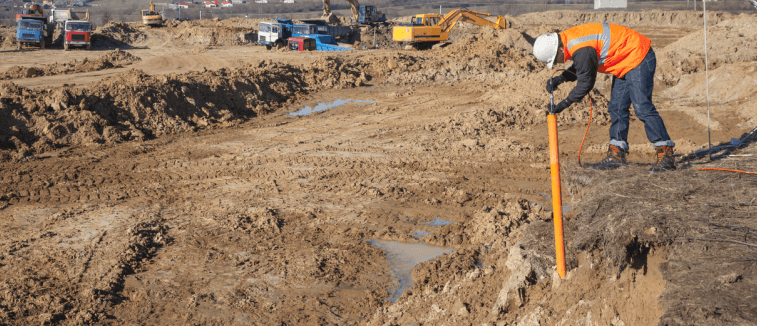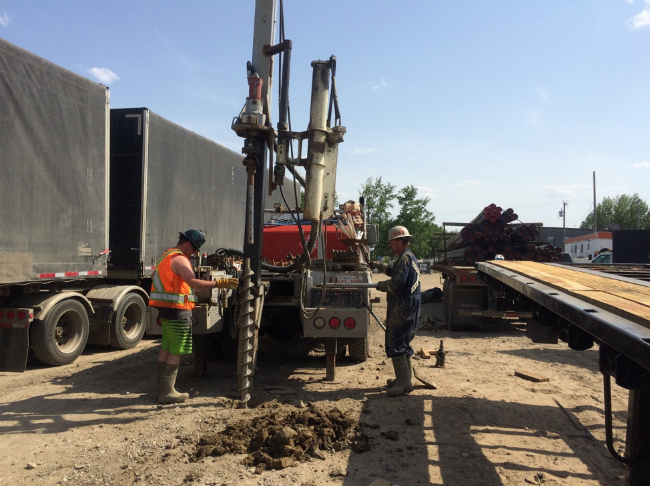Exploring the Function of a Geotechnical Engineer Description and Obligations
Exploring the Function of a Geotechnical Engineer Description and Obligations
Blog Article
A Thorough Review of Geotechnical Engineering Techniques and Their Impact on Modern Civil Design Projects
Geotechnical engineering serves as the backbone of modern-day civil engineering, supplying vital techniques that attend to the complexities of subsurface problems. The interplay of soil analysis, structure layout, and ingenious modern technologies shapes the stability and sustainability of facilities jobs.
Value of Geotechnical Engineering
Geotechnical design offers as a critical structure for civil design projects, influencing the safety and security and stability of frameworks. This discipline concentrates on the habits of dirt and rock materials, offering vital insights that lead the design and construction procedures. By understanding the interaction in between the earth and engineered structures, geotechnical designers can analyze dangers linked with ground problems, such as negotiation, slope stability, and liquefaction.
The value of geotechnical design expands past mere architectural integrity; it plays an essential role in environmental defense and sustainability. Correctly carried out geotechnical analyses guarantee that tasks minimize their ecological footprint and comply with regulative demands (all about geotechnical engineering). Geotechnical engineering is critical in site selection, making it possible for designers to determine ideal places for building and construction that minimize prospective risks.
Additionally, geotechnical design promotes development in civil engineering by progressing techniques for ground improvement, structure layout, and excavation. The technique's contributions are critical in resolving challenges postured by varying soil conditions, hence promoting risk-free and efficient framework advancement. In general, the significance of geotechnical design is critical in guaranteeing that civil engineering tasks are not just feasible however likewise resistant against natural and man-made misfortunes.
Trick Methods in Geotechnical Engineering
One more crucial method is dirt stabilization, which involves changing soil buildings to boost load-bearing ability or decrease settlement. Methods such as including cement, lime, or using geosynthetics are frequently utilized to accomplish soil enhancement.
Ground enhancement strategies, consisting of vibrant compaction and vibro-replacement, are additionally essential. These methods intend to densify loose or soft dirts, enhancing their stamina and reducing liquefaction possibility in seismic areas.
Maintaining structures, such as sheet stacks and dirt nailing, are utilized to support excavations and avoid dirt movement. Additionally, slope stabilization methods, including drain systems and keeping wall surfaces, are crucial for minimizing landslide risks.

Soil Evaluation and Evaluating Approaches
Effective dirt evaluation and screening techniques are vital for comprehending the chemical and physical residential properties of soil, which straight influence design decisions. An extensive assessment of dirt qualities is important for forecasting habits under different loading conditions and ecological influences.
Typical dirt screening techniques consist of both field and research laboratory methods. Area examinations, such as the Requirement Infiltration Test (SPT) and Cone Penetration Test (CPT), provide prompt understandings right into soil strength, stratification, and density. These examinations aid designers examine site problems effectively prior to more substantial research laboratory evaluations.
Research laboratory screening approaches, such as Atterberg restrictions, grain dimension circulation, and compaction examinations, are critical for determining soil plasticity, moisture content, and optimal compaction levels. Progressed strategies like triaxial examinations and combined undrained (CU) examinations offer useful information on shear toughness and effective stress and anxiety parameters.
Chemical screening, including pH, dig this electric conductivity, and natural material analysis, is additionally crucial for comprehending prospective dirt contamination and its impact on construction products. Jointly, these soil analysis and testing approaches form the foundation of notified decision-making in geotechnical design, ensuring the security and stability of modern-day civil engineering tasks.
Foundation Style Approaches
These approaches can be classified right into deep and shallow foundations, each suited to details soil conditions and loading situations. Superficial structures, such as spread footings and floor covering foundations, are normally utilized when surface area great site soils have appropriate bearing capacity.
On the other hand, deep foundations, consisting of heaps and pierced shafts, are employed when surface area dirts are weak or poor for supporting the structure. These structures transfer lots to deeper, extra secure dirt or rock layers, making them vital for skyscraper buildings and bridges in difficult geotechnical conditions.
Choosing the proper structure style includes detailed geotechnical examinations, including soil composition, bearing ability, and groundwater problems. In addition, designers need to take into consideration variables such as settlement, lateral lots, and prospective seismic activity to ensure the foundation's performance over time.
Ultimately, a well-executed structure design is an essential element of civil engineering, straight influencing the security, durability, and capability of frameworks. geotechnical companies in south africa. By aligning foundation types with site-specific problems, engineers can properly reduce risks connected with foundation failure
Innovations Shaping Civil Design

Sustainable materials, such as high-performance concrete and recycled accumulations, are likewise obtaining traction, advertising environmentally friendly techniques while maintaining structural honesty. Additionally, advanced geotechnical strategies, such as ground enhancement and deep blending techniques, are enhancing the security of foundations in challenging soil problems.
Furthermore, the use of drones and remote picking up modern technology is boosting website surveying and monitoring, providing real-time information that help in managing construction progress and security. The application of cutting-edge building techniques, such as modular and prefabricated construction, further expedites task timelines and lowers waste. Jointly, these innovations are not just changing civil browse this site engineering techniques yet likewise making sure that contemporary infrastructure fulfills the demands of a growing global populace while dealing with environmental concerns.
Verdict
In verdict, geotechnical engineering strategies are indispensable to the success of contemporary civil engineering tasks. The application of site examination, soil stablizing, and ground enhancement approaches makes certain the security and security of infrastructure. Advancements such as Building Details Modeling (BIM) and advanced tracking technologies additionally improve project performance and accuracy. By utilizing these methods, engineers can mitigate dangers and add to the development of durable urban settings, eventually fostering sustainable development and safety and security in civil design techniques.
Geotechnical engineering serves as the backbone of modern-day civil engineering, offering important techniques that deal with the complexities of subsurface problems.Geotechnical design offers as a vital foundation for civil engineering jobs, affecting the security and stability of structures.In addition, geotechnical design cultivates innovation in civil design by advancing methods for ground renovation, structure layout, and excavation. On the whole, the value of geotechnical design is extremely important in guaranteeing that civil engineering projects are not just viable however likewise resilient versus natural and synthetic adversities.
In conclusion, geotechnical engineering techniques are essential to the success of modern civil design tasks.
Report this page